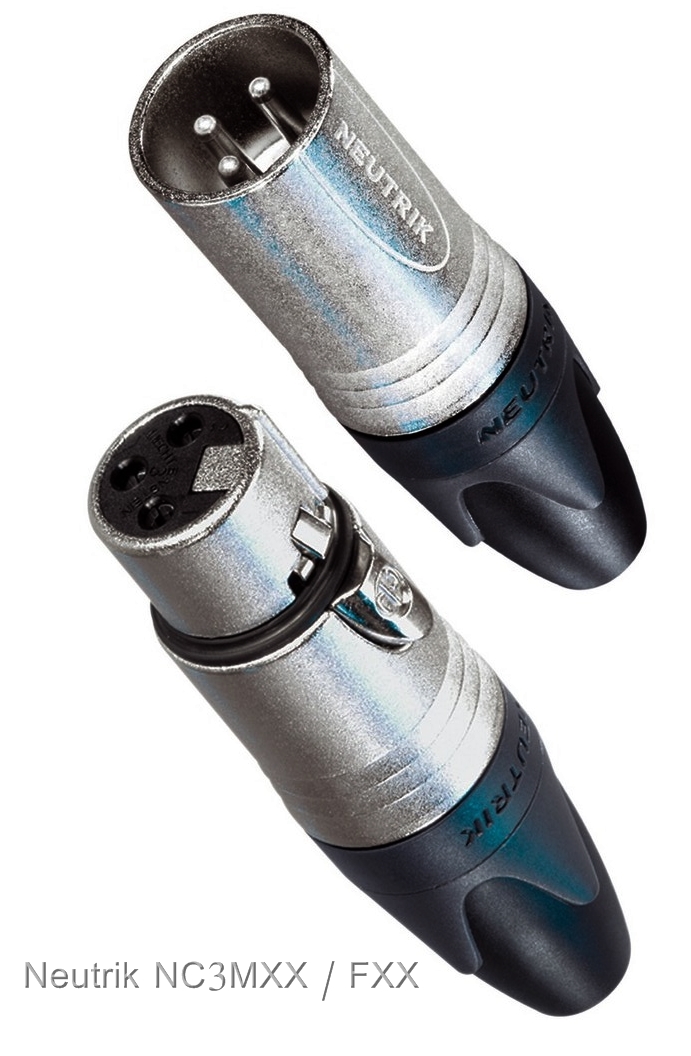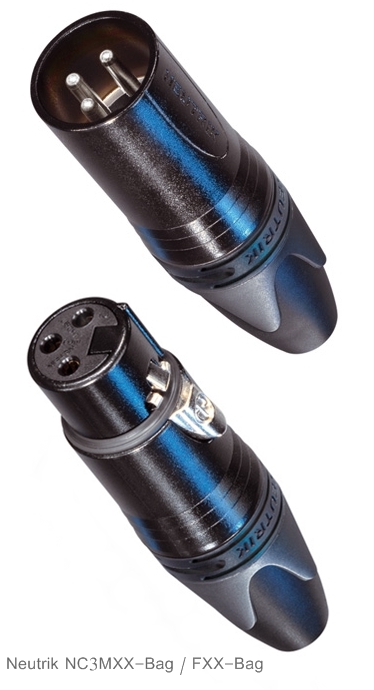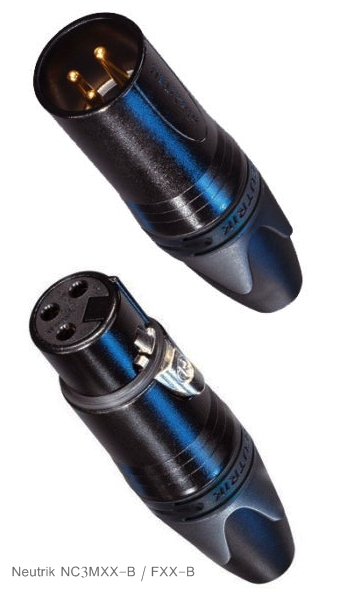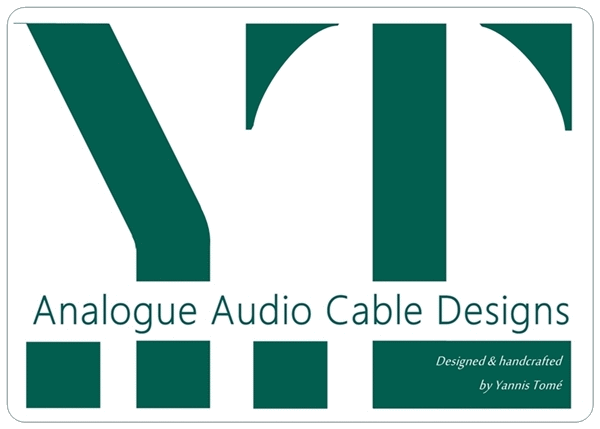 |
||||||||
|
|
||||||||
|
XLR CONNECTORS |
|
|
||||||||||||||||||||||||||||||||||||
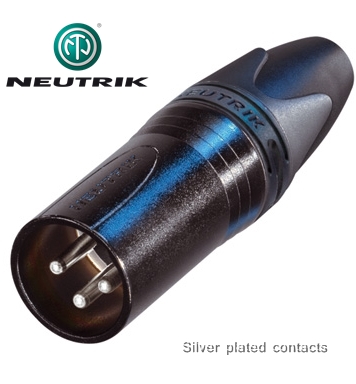 |
|||||
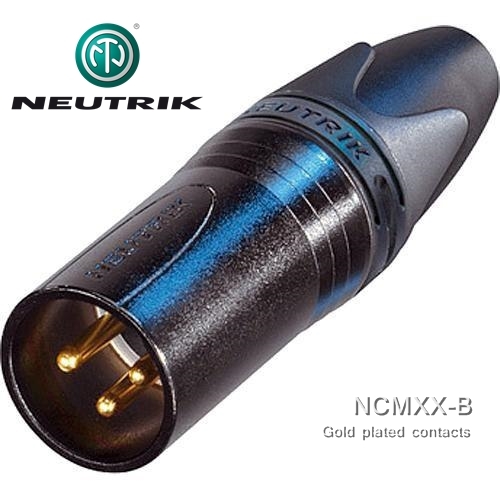 |
|||||
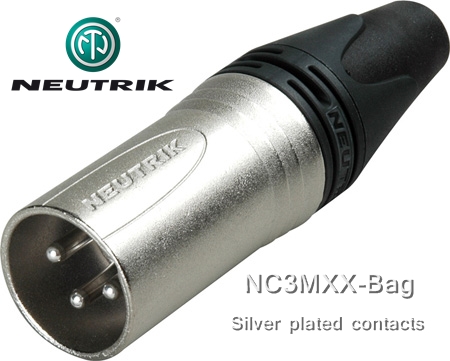 |
|||||
|
M3G(Tc)_& F3G(Bc) |
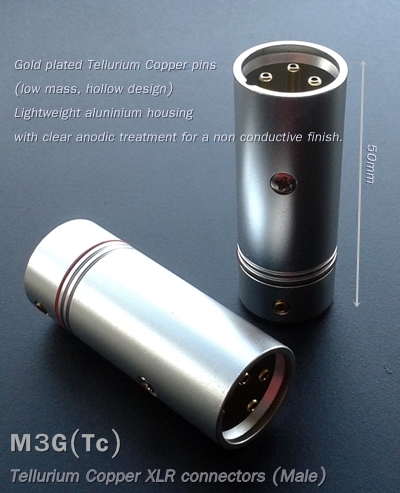 |
|||
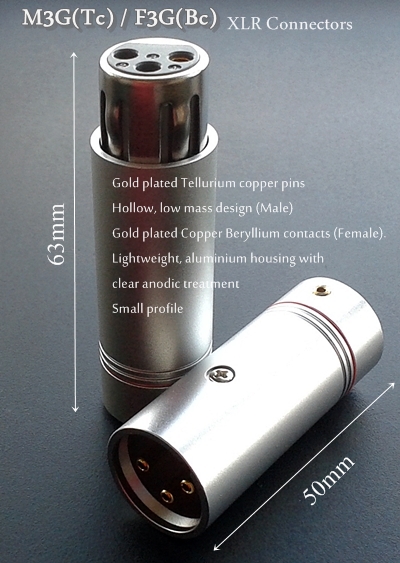 |
|||
|
In 2021 we introduced a new line of XLR connectors manufactured to our specifications.These are small profile XLRs with the connector housing machined from non-magnetic, lightweight aluminium. M3G(Tc) is a male, 3pin XLR connector, with hollow pins made of Tellurium copper (99% copper) and finished with a Gold plating. F3G(Bc) is a female XLR which features gold plated Beryllium Copper contact. |
|
ATLAS ALLCU |
|||||||||
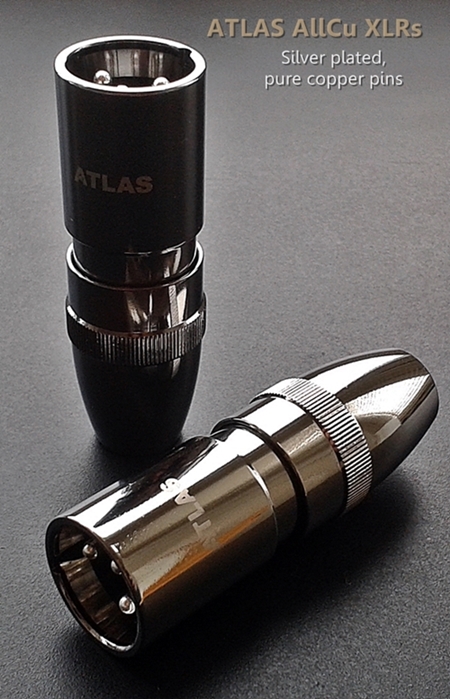 |
|||||||||
|
AECO AMI-1060 |
|||||||||
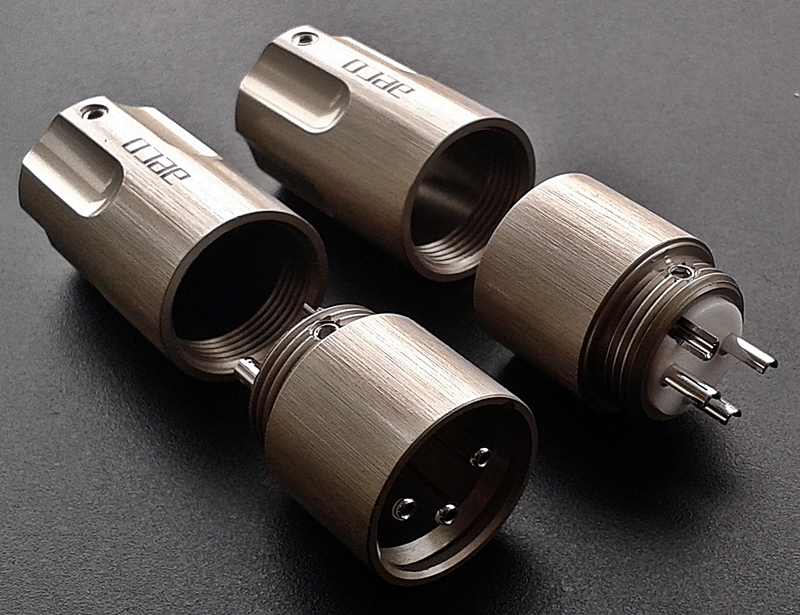 |
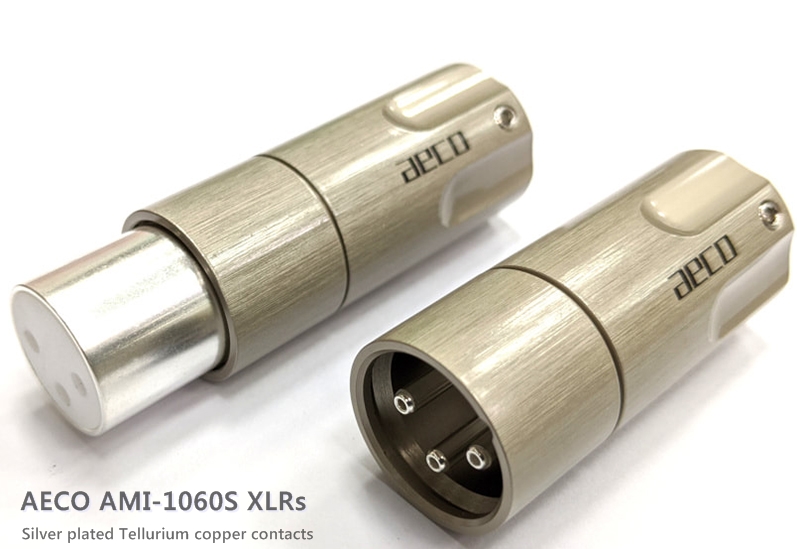 |
||||||||
|
Tellurium Copper XLR connectors (C14500 with Copper content > 99%) with 10u nickelf ree silver plating and PTFE insulation .Firm grip, no latching mechanism on the female plug. |
|
AECO has been manufacturing connectors for many years. However, it is only the past few years that the company has started producing higher specification connectors for hi-fi. Unlike many “hi-end” Chinese manufacturers and their products, the AECO connectors are a very pleasant surprise with their originality not simply on the appearance but mainly with their well-thought designs and experimental approach on true functionality and performance. |
|
DH LABs Silver Sonic XLRs |
||||||||||||||||||||||||
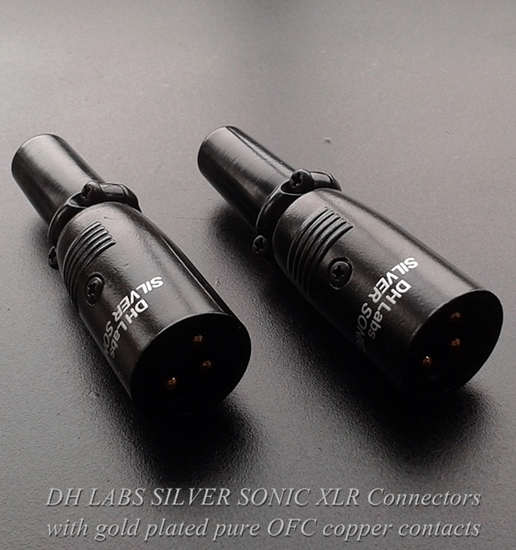 |
||||||||||||||||||||||||
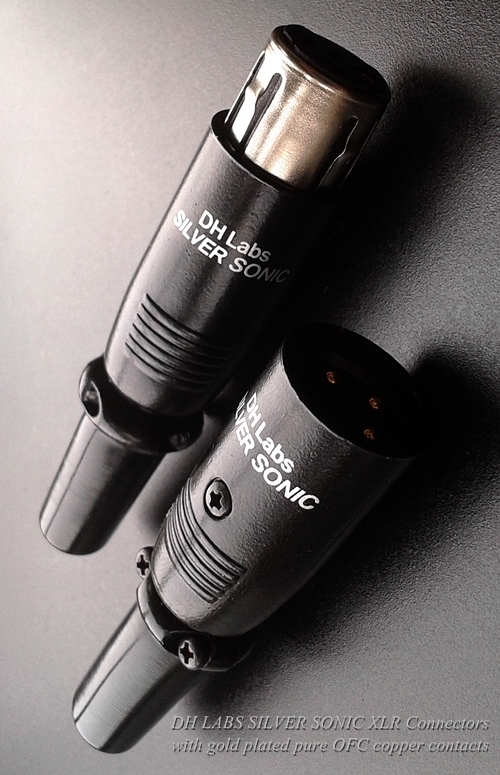 |
||||||||||||||||||||||||
|
Manufacturer’s website: https://silversonic.com/products/connectors/ultimate-xlr/ |
||||||||||||||||||||||||
|
VAMPIRE XLRs |
||||||||||||||||||||||||
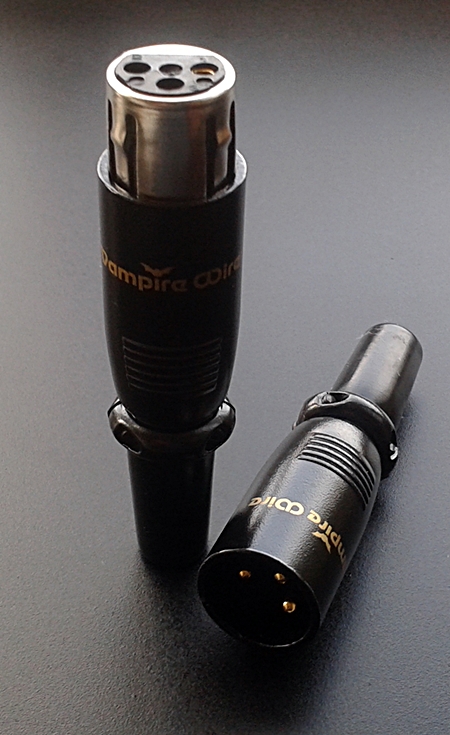 |
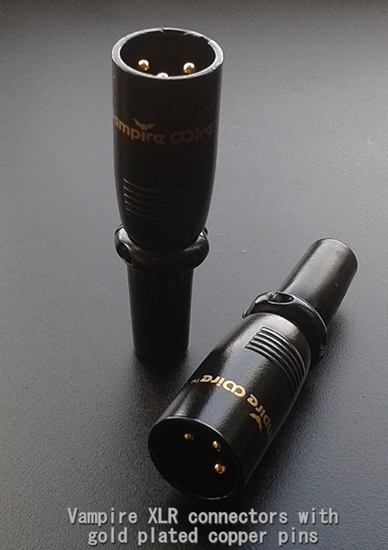 |
|||||||||||||||||||||||
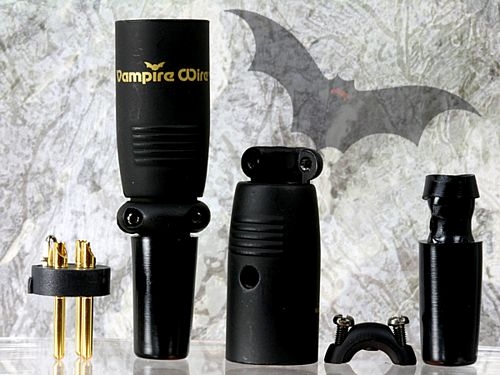 |
||||||||||||||||||||||||
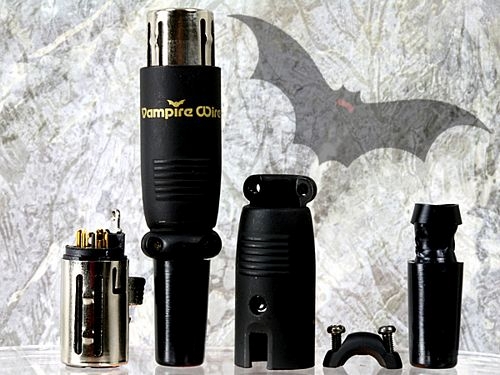 |
||||||||||||||||||||||||
|
XHADOW |
||||||||||||||||||||||||
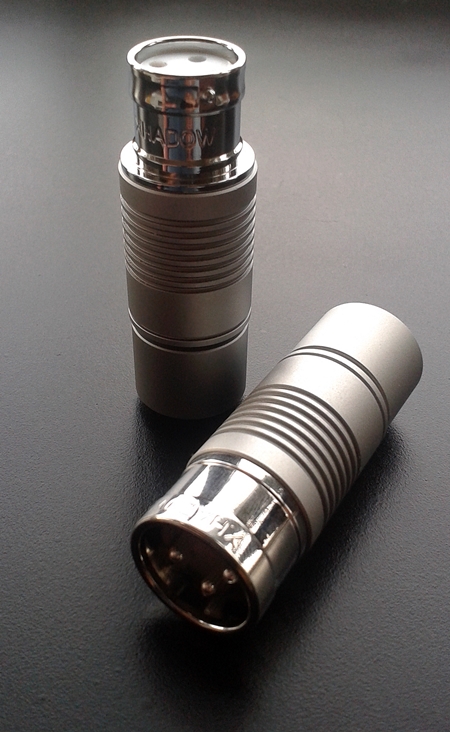 |
||||||||||||||||||||||||
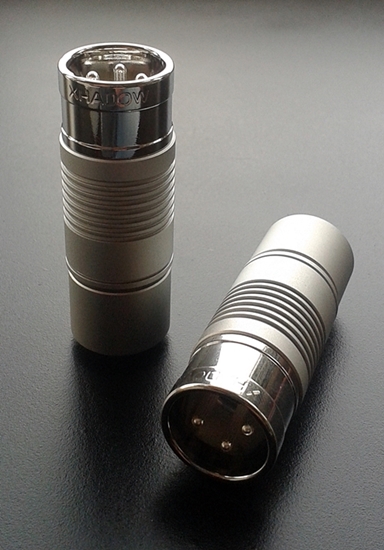 |
||||||||||||||||||||||||
|
Manufacturer’s description: “The Xhadow Precision Reference XLR is easily the finest XLR in the world. The Xhadow Precision XLR has been designed with respect for the audiophile perspective: Precision, purity, simplicity, and elegance. |
||||||||||||||||||||||||
|
We have no affiliation with any connector manufacturer and we are not a distributor or re-seller of any products. We have absolutely no interest in recommending or selling our cables with more or less expensive connectors. The XLRs we choose to have available with our cables are not chosen having in mind their brand name or their popularity but their specific design characteristics and the potential advantages they offer in their given price-range. Choosing to have a cable fitted with ”better” XLRs will most likely have a smaller sonic impact than if you were to improve your RCA connectors. The main reason is that XLR connectors (by design) do not cause as many problems as RCAs do and as a result the performance difference between a “basic” and “upgraded” XLR will most often be smaller than the difference between a “basic” and an “improved” RCA connector. However, still, there are many areas where a typical XLR connectors can see major improvements that will reflect on its performance. The connector insulator (dielectric) is an obvious area where an XLR connector can be improved in regards to its electrical properties. The use of Teflon over other plastics would be the ultimate choice. Teflon can be found on a few XLRs (usually offered at quite high prices). Keep in mind that using Teflon as an insulator for an XLR design is not a direct replacement to using other plastics. Teflon is a very challenging material to successfully incorporate in such a connector design and often its use requires a complete redesigning of the connector housing and the method its contacts are profiled assembled. The second very obvious area where a an XLR connector can have certain advantages over another is the contact material. Here, It should be noted that the construction and materials of the male and female counterparts of the XLR connectors of the same model/brand can be very different from each other. So, it is wrong to assume that because a male part is made of pure copper the female is, too. The choice of production processes of the male and female contacts (i.e. machining, casting or stamping) as well as the metals that are used, need to satisfy the requirements for specific profiling and mechanical characteristics that vary significantly between the two types of XLR connectors. Most male XLR connectors are made of brass and most of the female ones are made of phosphor bronze. Brass can achieve the hardness required while phosphor bronze can maintain a spring-like mechanical property which allows the “socket” to be re-used many times without loosing its grip on the male pin (leading to increased contact resistance). As you can understand the mechanical properties of the metal used is an extremely important factor and it will have major implications on the electrical performance of the connection during the use of the cable. Brass and phosphor bronze are not the best materials in terms of their conductivity, but their performance is quite satisfactory and given their relatively high mass (in the context of low level analogue signal), their nominal conductivity ratings do not cause any concern. Of course, “brass” and “bronze” are general terms that describe a broad category of copper alloys. Some are better suited than others for the given application.. It is quite difficult to identify the quality of these alloys on the XLR contacts since most manufacturers do not publicize the precise details of the alloys used. So in such cases one may have to go for a manufacturer he/she trusts or for connectors that he/she has a prior experience with. Improving the electrical performance of the XLR contacts while maintaining (or even improving further) the necessary mechanical characteristics has always been in the core of research for electrical contacts. Whenever the use of pure copper or silver are not viable options, creating high conductivity alloys that are “rich” in copper content (almost pure) has often been the solution. So Tellurium copper tends to be one of the best substitutes to brass while beryllium copper is the substitute to phosphor bronze. These alloys come in variants that either focus on their mechanical properties or their electrical ones. In our case the high conductivity variants are preferred. Pure Copper and pure Silver: The use of pure copper or pure silver may seem like a very straight forward upgrade option but for many reason it may not be. Pure copper and silver can replace the brass pins of the male XLR with relative ease. Assuming that the connectors will be handled with relative care, both pure silver and copper can achieve adequate hardness for this purpose. However, they are not easy to machine. Also, keep in mind that “hardened” silver and copper exhibit significantly lower levels of conductivity than when in their soft annealed form (even though they may still have the same high levels of purity). When, it comes to the female XLR, the use of pure silver or copper becomes a lot more challenging. In their pure form (soft or hardened) these materials do not have the necessary spring properties required for the female contact in order to maintain firm connection over extended time or over many mating cycles. There are certain techniques that do allow the incorporation of pure copper and silver for use on the female XLR contacts. Such techniques require rather innovative approaches to the design and assembly of the connector and most often their high cost will out weight the potential performance benefit. The plating of the connector contacts is also a very common consideration. Given the length of this subject we will not discuss it here. We will simply state the obvious: Out of the 3 most popular types of plating (Gold, Silver and Rhodium), silver is the one with the highest conductivity but also the least wear resistant and highly reactive to its environment. Rhodium is the most hard wearing but also the least conductive. Gold stands somewhere in between. We are hoping to further expend on the advantages and drawbacks of the various types of plating at a different section. As with all connectors, there are numerous other considerations that one should take into account when choosing XLR connectors. Their durability, size, shielding ability, finish, the presence or not of a latching/locking mechanism, tight tolerances etc do matter. However each end user has different priorities and preferences as to what would best suit his/her needs for the specific application. We do understand that most customers as well as many manufacturers tend to focus on the notion of conductivity and /or what is the sonic signature of the various metals that are used for the construction of cables and connectors. Ourselves we investigate and apply a wealth of electrical and mechanical engineering principles in designing our cables and selecting the connectors we use; and we specifically focus on their applicability on low level analogue audio signal applications (not electrical or audio signals in general). Such a specialised focus is necessary in order to produce results that will have true meaning and positively reflect on actual performance. |
||||||||||||||||||||||||
|
Yannis Tomé Audio Cables, 36 Dinas Terrace, Aberystwyth, Ceredigion, SY23 1BT, UK - email: info@back-promo.co.uk © 2025. Y. Tomé Audio Cables |
||||||||||||||||||||||||
